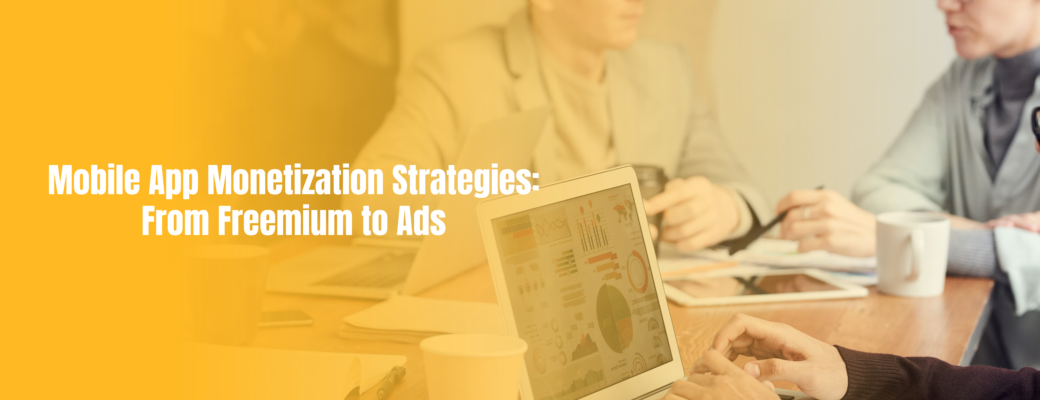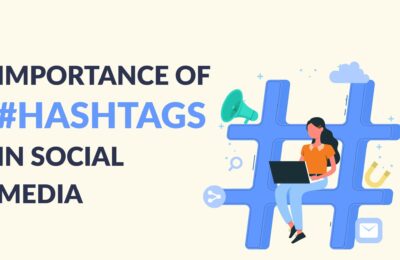Ethical hacking to malicious cyber activities In the intricate landscape of cybersecurity, the term "hacking" has…
Mobile App Monetization Strategies: From Freemium to Ads
In the present computerized age, versatile applications have turned into a necessary piece of our day to day routines. From efficiency devices to amusement applications, there’s an application for nearly everything.
Mobile App Monetization Strategies: The technique of making money from your mobile application is known as mobile app monetization. Your mobile app can be monetized in a number of ways, and the most effective one will rely on its objectives, target market, and niche.
The Freemium Model
The freemium model is an adaptation procedure that offers a fundamental variant of the application for nothing, while at the same time charging clients for premium elements or content.
A free basic version of a product or service is offered to clients along with more advanced or premium capabilities that may be obtained for a cost. This pricing structure is known as the freemium model.
In the digital age, this strategy has become increasingly common, especially in the software, app, and online services sectors. By lowering the entry barrier of money, it hopes to draw in a large user base, which it will subsequently monetize through a variety of Mobile App Monetization Strategies.
Because it appeals to people who are afraid to make a financial commitment before first experiencing the value of the product, this is very effective at drawing in a huge user base. It frequently comes with a simple registration procedure, lowering the entrance barrier.
This approach has acquired huge notoriety throughout the long term and offers a few benefits:
1. Draw in a Bigger Client Base
Offering a free rendition of your application permits you to draw in a more extensive crowd. Individuals love free stuff, and this can assist you with rapidly fabricating a client base.
2. Client Commitment and Maintenance
Whenever clients have downloaded your application for nothing, you have a chance to draw in them and exhibit the worth of your superior highlights. This can prompt higher client maintenance and expanded client devotion.
3. Different Income Streams
With the freemium model, you can make different income streams. You can charge clients for premium highlights, offer memberships for continuous substance or administrations, and even sell virtual merchandise or cash inside the application.
4. Criticism and Improvement
By offering a free rendition of your mobile application, you can assemble criticism from a wide client base. This criticism can be significant for working on your application and making it more appealing to clients.
Be that as it may, there are likewise a few difficulties related with the freemium model:
1. Difficult exercise
Finding some kind of harmony among free and premium features is fundamental. Assuming your free rendition needs esteem, clients probably won’t try redesigning. Then again, on the off chance that you make the free adaptation too great, less clients might be propelled to pay for the superior highlights.
2. Adaptation Tension
There can be strain to constantly add new premium highlights or content to keep clients paying. This might prompt a consistent pattern of advancement and improvement.
3. Client Assumptions
Clients who download your application for nothing might have elevated standards. Guaranteeing that your free adaptation is cleaned and significant is fundamental to draw in and hold clients.
In-Application Promoting
In-application promotion is another well known adaptation methodology. It includes showing notices inside your application and producing income from snaps, perspectives, or activities on those advertisements. Here are a few critical advantages of utilizing in-application promoting:
1. Different Promotion Organizations
In-application promoting offers an assortment of advertisement designs, like standard advertisements, interstitial promotions, compensated recordings, and local promotions. This variety permits you to pick the organization that best accommodates your application’s plan and client experience.
2. Simple Execution
Coordinating in-application publicizing is moderately clear, because of different promotion organizations and SDKs accessible. This straightforwardness can save you time and assets.
3. No Immediate Expense for Clients
Since clients aren’t expected to pay for content or elements, in-application publicizing gives an income stream without straightforwardly influencing the client’s pocket.
4. Adaptability
The potential for scaling your income is significant, particularly if your application has a huge client base. The more clients draw in with advertisements, the more income you can produce.
Notwithstanding, in-application publicizing additionally has its difficulties:
1. Client Experience
Extreme or nosy advertisements can adversely influence the client experience and lead to diminished client commitment. Finding some kind of harmony among advertisements and client fulfillment is urgent.
2. Promotion Pertinence
To amplify income and client commitment, showing significant ads is fundamental. Immaterial promotions can be irritating and insufficient.
3. Promotion Obstructing
A few clients might utilize promotion obstructing programming, which can restrict your publicizing income. It’s crucial for track down ways of working around promotion blockers or urge clients to handicap them.
4. Reliance on Promotion Organizations
Your income relies upon the exhibition and arrangements of the promotion networks you use. Changes in promotion network approaches or income offer can affect your profit.
Picking the Right Procedure
While settling on an adaptation procedure for your versatile application, consider your interest group, the idea of your application, and your drawn out objectives. Here are a few variables to assist you with picking the right methodology:
Freemium Model
- Ideal if your application has a significant client base.
- Incredible for applications offering premium highlights, content, or administrations.
- Functions admirably for applications that can constantly add new elements or content to tempt clients.
- Important if you have any desire to accumulate client input for application improvement.
In-Application Publicizing
- Reasonable for applications with a wide client base.
- Functions admirably for applications with a characteristic fit for promotions that don’t disturb the client experience.
- Ideal in the event that you need an income stream that doesn’t straightforwardly influence clients’ wallets.
- Viable for applications with a versatile client commitment technique.
Eventually, the best methodology might include a blend of both freemium and in-application promoting. Numerous effective applications utilize a crossover way to deal with boost income while keeping clients drawn in and fulfilled.
Carrying out Your Picked Procedure
Whenever you’ve chosen an adaptation procedure, now is the right time to successfully carry it out. Here are a few hints to kick you off:
For the Freemium Model:
- Obviously characterize the worth of your top notch highlights.
- Ensure the free rendition of your application is convincing and locking in.
- Consider offering restricted time advancements or limits on premium highlights to boost overhauls.
- Persistently accumulate client criticism and make upgrades in light of their ideas.
- Routinely update your application to keep clients drawn in and intrigued.
Conclusion
The aforementioned tactics, which range from in-app advertisements to freemium models, present a variety of revenue options in the ever-changing landscape of mobile app monetization. The secret to success is to know your demographic, your app’s unique value offer, and how to balance income creation with user pleasure. Make sensible decisions, adjust, and maximize for long-term success.





This Post Has 0 Comments